Thanks, Sam Altman, for giving us access to ChatGPT's new integrated image-generation skills. They're, as Steve Jobs might've described them, insanely good.
So good, in fact, that I'm worried now about my little corner of the universe where we try to discern the accuracy of renders, models, and pre-production leaks that might tell us the tale of future Apple products, like the rumored iPhone 17 Air.
For those who don't know, the iPhone 17 Air (or Slim) is the oft-talked-about but never-confirmed ultra-slim iPhone 16 Plus/iPhone 16e/SE hybrid that could be the most exciting iPhone update when Apple likely unveils a whole new iPhone 17 line in September.
While it may not be the most powerful iPhone, it should be the biggest and thinnest of the bunch. Even the single rear camera might not be enough to keep potential buyers away.
Imagining what it could look like, well, that's my job. Or it was until I started working with ChatGPT running the recently updated 4o model, which is capable of generating images out of thin air or based on photos and images you upload into it.
It's a slightly methodical model, taking up to 45 seconds to generate an image that flows in slowly, almost one microscopic, horizontal line of pixels at a time. The results are something to behold.
It's not just the quality but how ChatGPT can maintain the thread and cohesion of images from prompt to prompt. Usually, if you start with image generation in something like OpenAI's Dall-E or, say, X's Grok, it'll do a good job with the first image.
However, when you request changes, elements of the original disappear or end up altered. It's even harder to create a series of images that appear to be part of the same story or theme. There are usually too many differences.
ChatGPT 4o image generation appears different and, possibly, more capable.
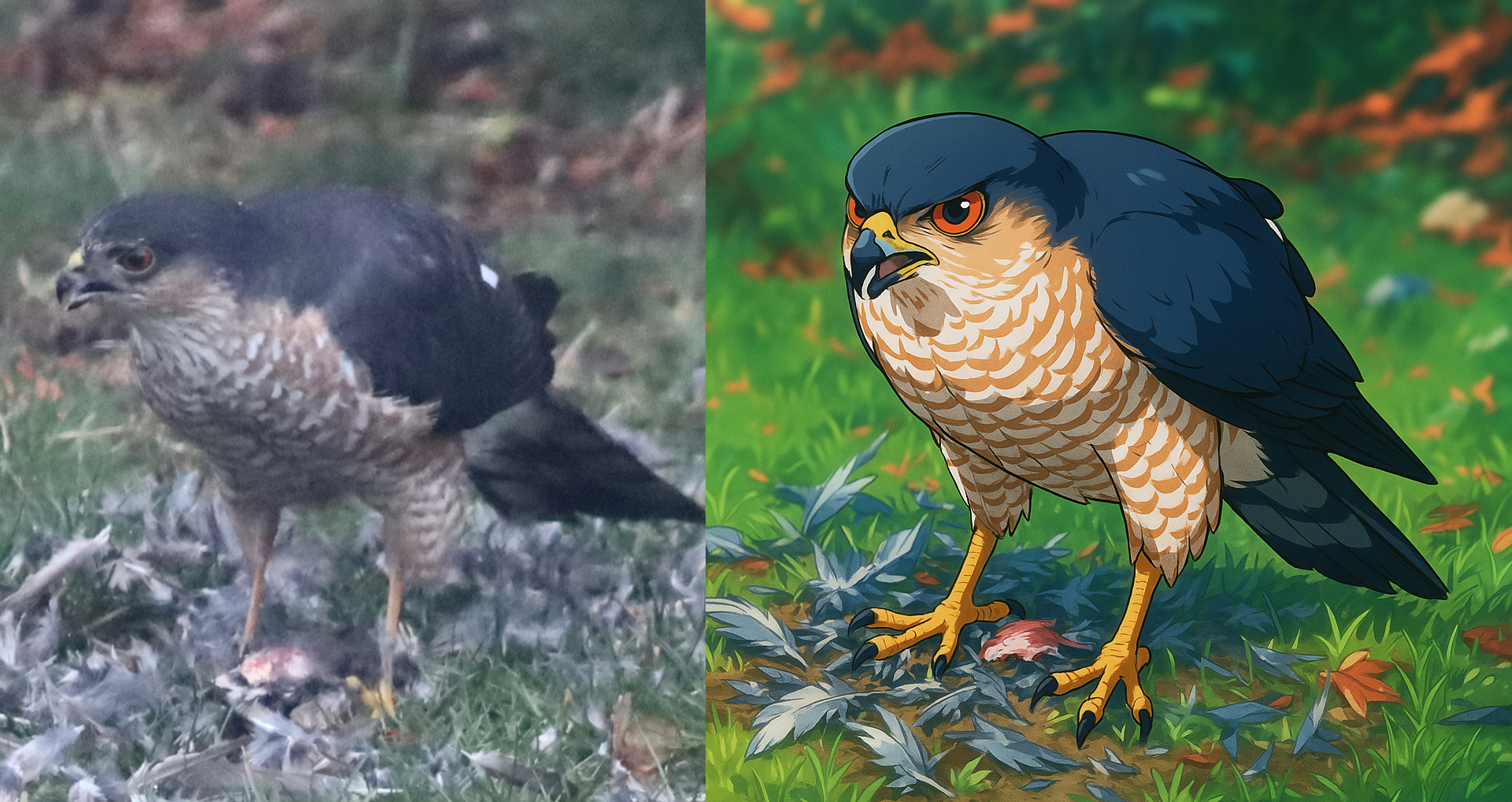
Having already experimented a bit with the model shortly after Altman and other OpenAI engineers announced it, I quickly found that ChatGPT 4o did its best work when you started with a solid source.
I initially had fun turning images of myself and even photos I took this week of a peregrine hawk into anime. However, I was curious about ChatGPT's photo-realism capabilities, especially as they relate to my work.
Apple announced this week that WWDC 2025's keynote would fall on June 9. It's an event where the tech giant outlines platform updates (iOS, iPadOS, macOS, etc) that inform much of how we think about Apple's upcoming product lineup. With information like this, we can start to map out the future of the anticipated iPhone 17 line. Visualizing what that will look like can be tough, though. So, I decided to let ChatCPT's newest image model show me the way.
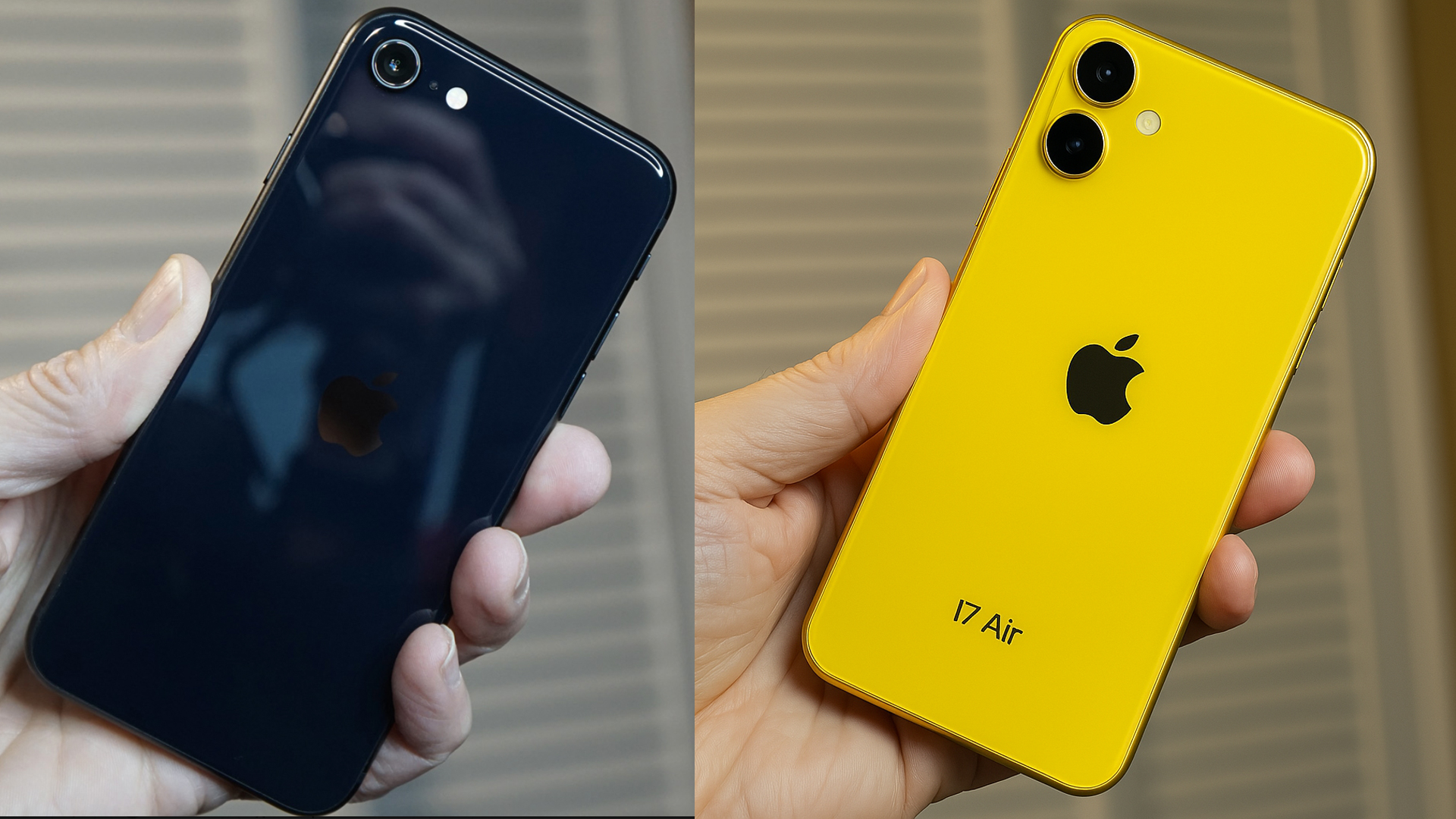
Since the iPhone 17 Air would conceivably be the newest member of the iPhone family (shoving aside the less-than exciting iPhone 16e), I decided to focus on that.
Initially, I handed ChatGPT an older iPhone SE review image with this prompt:
"Use this photo to imagine what an Apple iPhone 17 Air might look like. Please make it photo-realistic and a nice, bright color."
ChatGPT did a good job of maintaining the settings from the original photo and most of my hand, though I think I lost a finger. It did well updating the finish and even added a second camera, making it part of a raised camera bump.
I followed with this prompt:
"This is good. Since the iPhone 17 Air is supposed to be super-thin, can you show it from the side?"
ChatGPT lost the background and made the image look like an ad for the iPhone 17 Air. It was a nice touch, but the phone didn't look thin enough. I prompted ChatGPT to make it thinner, which it did.
This was progress, but I quickly realized my error. I hadn't based the prompt on available iPhone 17 Air rumors, and maybe I wasn't being prescriptive enough in my prompts.
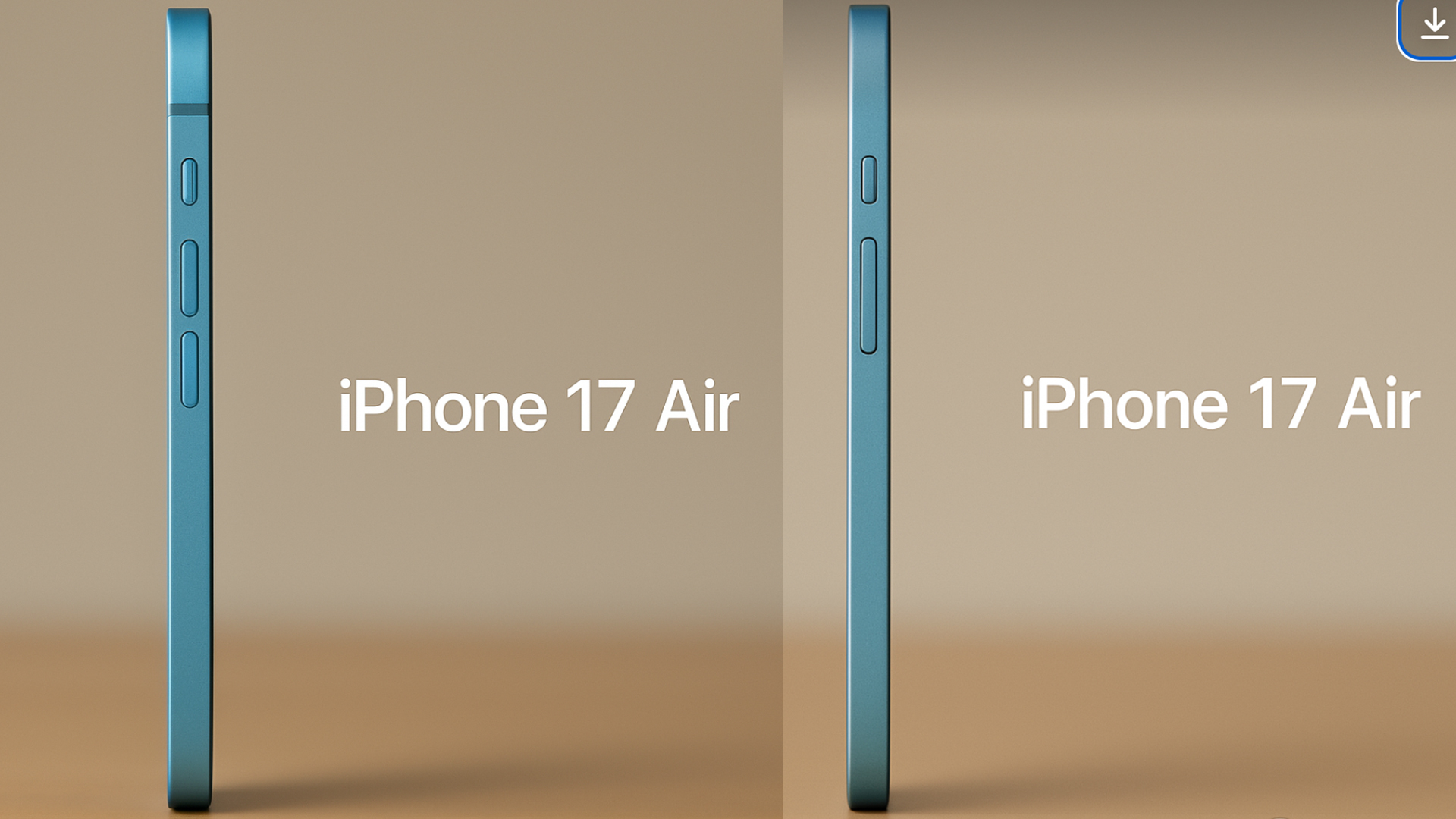
Since the iPhone SE is now a fully retired design, I decided to start over with a review image of the iPhone 16 Pro and initially used the same prompt, which delivered an iPhone 16 Pro in a lovely shade of blue.
This time, when I asked to see the thin side of the phone. I told ChatGPT, "Don't change the background."
I was pleased to see that ChatGPT more or less kept my backyard bushes intact and seamlessly inserted the new phone in something that now sort of looked like a more attractive version of my hand.
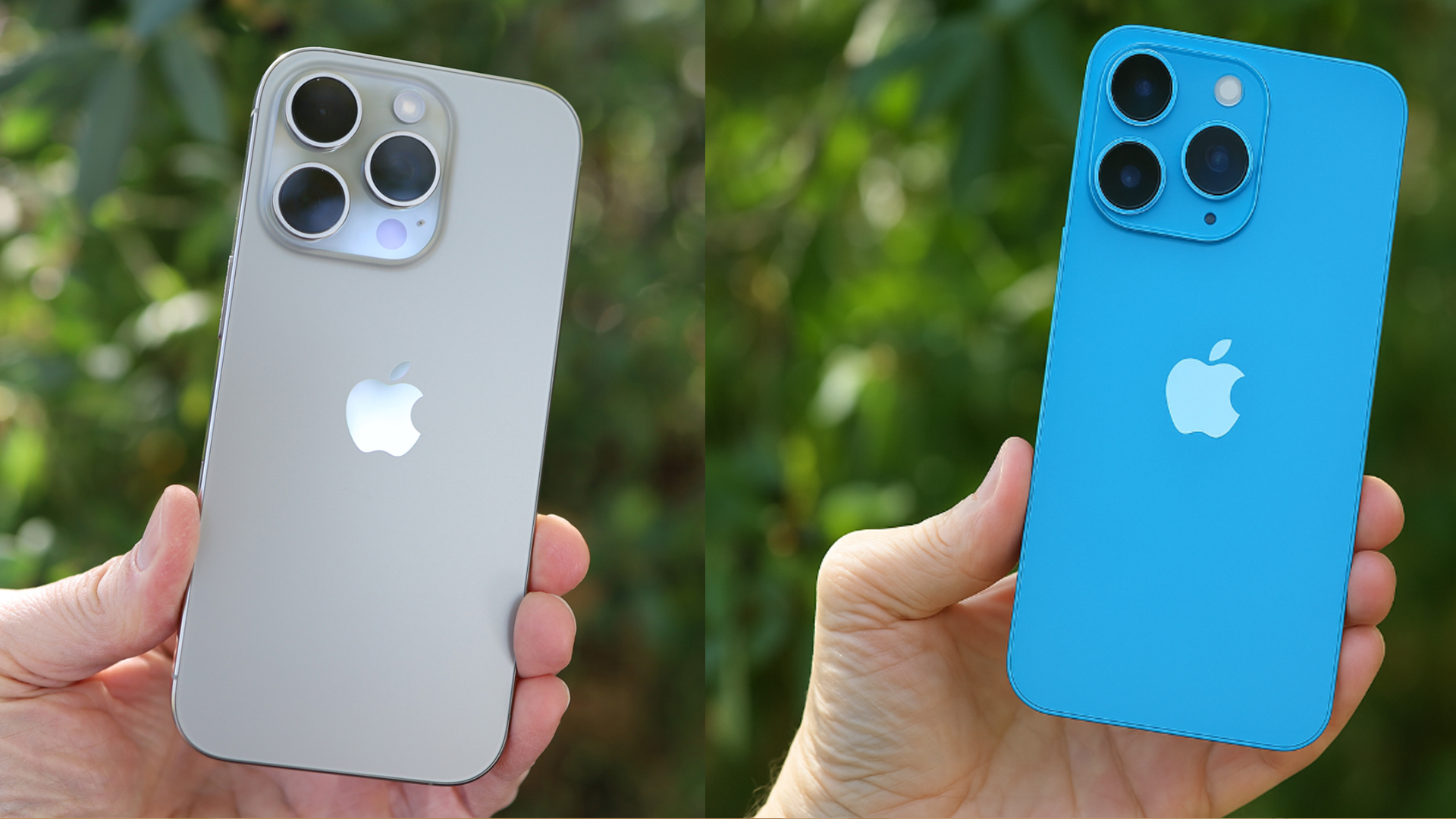
Some iPhone 17 Air rumors claim the phone might have just one camera, so I told ChatGPT to remove two cameras and rerender.
In previous prompts, I'd told ChatGPT to "make it thinner," but what if I gave the chatbot an exact measurement?
"Now show me the side of the iPhone 17 Air. It should be 5.4mm thick and the same color."
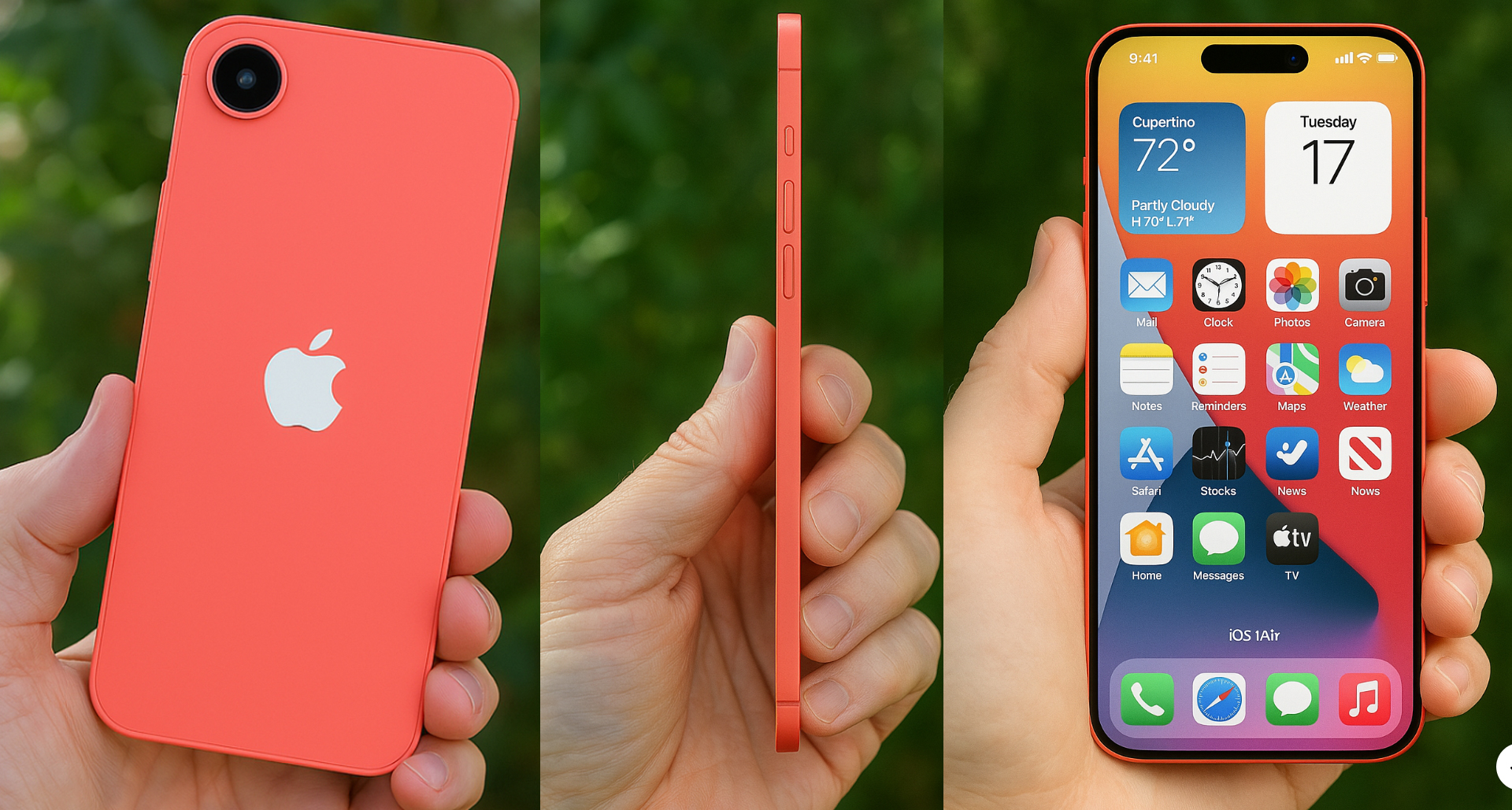
This was almost perfect. I did notice, though, that there was no discernable camera bump, which seems unlikely in a 5.4mm-thick iPhone. Even the anticipated ultra-thin Samsung Galaxy S25 Edge features a camera bump. There is no way the iPhone 17 Air will get away without one.
Finally, I asked for a render of the screen:
"Now show me the iPhone 17 Air screen. Make sure it shows the Dynamic Island. The screen should be bright and look like an iPhone home screen with apps and widgets."
Once again, ChatGPT did an excellent job, except for an "iOS IAir" label just above the dock. The rest of the App Icon labels are perfect, which is impressive when you consider the difficulty most image generation models have with text.
ChatGPT doesn't produce images with AI watermarks; only the file names tell you these are ChatGPT images. That's concerning, as is the exceptional quality.
I expect the internet will soon be flooded with ChatGPT iPhone and other consumer electronics hardware renders. We won't know what's a leak, what's a hand-made render, or what's direct from the mind of ChatGPT based on prompts from one enterprising tech editor.
You might also like
from Latest from TechRadar US in News,opinion https://ift.tt/NBDmpoT